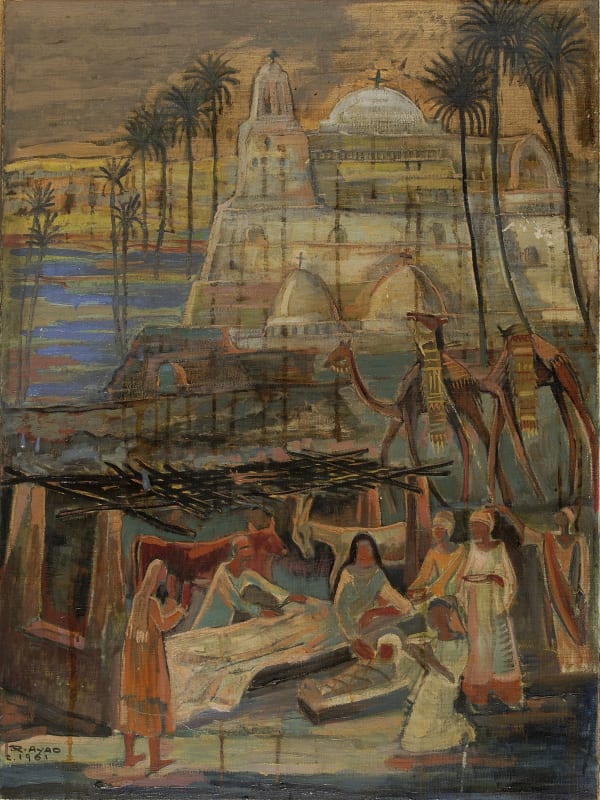Ayad is known for being the first artist to rectify the significance of ancient Egyptian art, whose constructs and fundamentals he faithfully applied to all of his paintings, especially those illustrating rural life scenes. It was for this reason that Ayad is recognized as one of the undisputed forefathers of Modern Egyptian art.
Ragheb Ayad was born in Cairo on March 10, 1892, and entered the School of Fine Arts shortly after it was founded in 1908. Upon graduation he taught art at the Coptic Secondary School and made several trips on his own to France and Italy to complete his artistic education. He was the first Egyptian artist to obtain a governmental scholarship to Rome, where he remained for five years studying art at the Superior Institute for Fine Arts. After his return to Cairo in 1930, he was appointed director of the decorative arts section at the Faculty of Applied Arts in Zamalek, Cairo, and as director of its Free Section. He was in charge of renovating the Coptic Museum, and after 1950 became director of the Museum of Modern Egyptian Art, where he created a special section for the great sculptor Mahmoud Mokhtar (1891-1934).
For half a century from 1924 he participated in most of the exhibitions of the Cairo Youth Salon (Salon El Shabab) as well as completing over forty solo exhibitions. Ayad is regarded as one of the pioneers of twentieth-century Egyptian art along with Mahmoud Mokhtar (1891-1934), Youssef Kamel (1890-1971), Mohamed Hassan (1906-1990), Mahmoud Said (1897-1964), and Mohamed Naghi (1888-1956). Ayad was the first Egyptian artist to shed western influences in his art and to create an Egyptian art with its own social identity. Throughout his life he devoted his work to depicting the lives of the popular folk, whether in cosmopolitan Cairo or in upper Egyptian towns and villages. He visited all these places, recording the pulsating life of the souk (markets), moulid (festivals), cafes and dancers. Ayad remained forever the painter of this true Egyptian universe. He is considered to be its first expressionist, who subsequently influenced the two generations of artists that followed the pioneers.
Aside from ordinary life, Ayad was drawn to religious themes close to his heart as a Christian, portraying the flight of the Holy Family into Egypt and the birth of Jesus in his masterpiece La Nativité. Moreover, Ayad is known for being the first Egyptian artist to rectify the significance of ancient Egyptian art, whose constructs and fundamentals he faithfully applied to all of his paintings, especially those illustrating rural life scenes. It was for this reason that Ayad is recognized by many as one of the undisputed forefathers of Modern Egyptian art.
In his rural life portrayals, we see a succession of different aspects of rural life portrayed in consecutive horizontal layers instead of in three dimensions. The final period of his career was dominated by his portrayal of the monks of the various ancient monasteries of Egypt as well as of their architecture. In 1965 Ayad was decorated with the highest honor of the Egyptian state and was also decorated by Italy in appreciation of his art.

